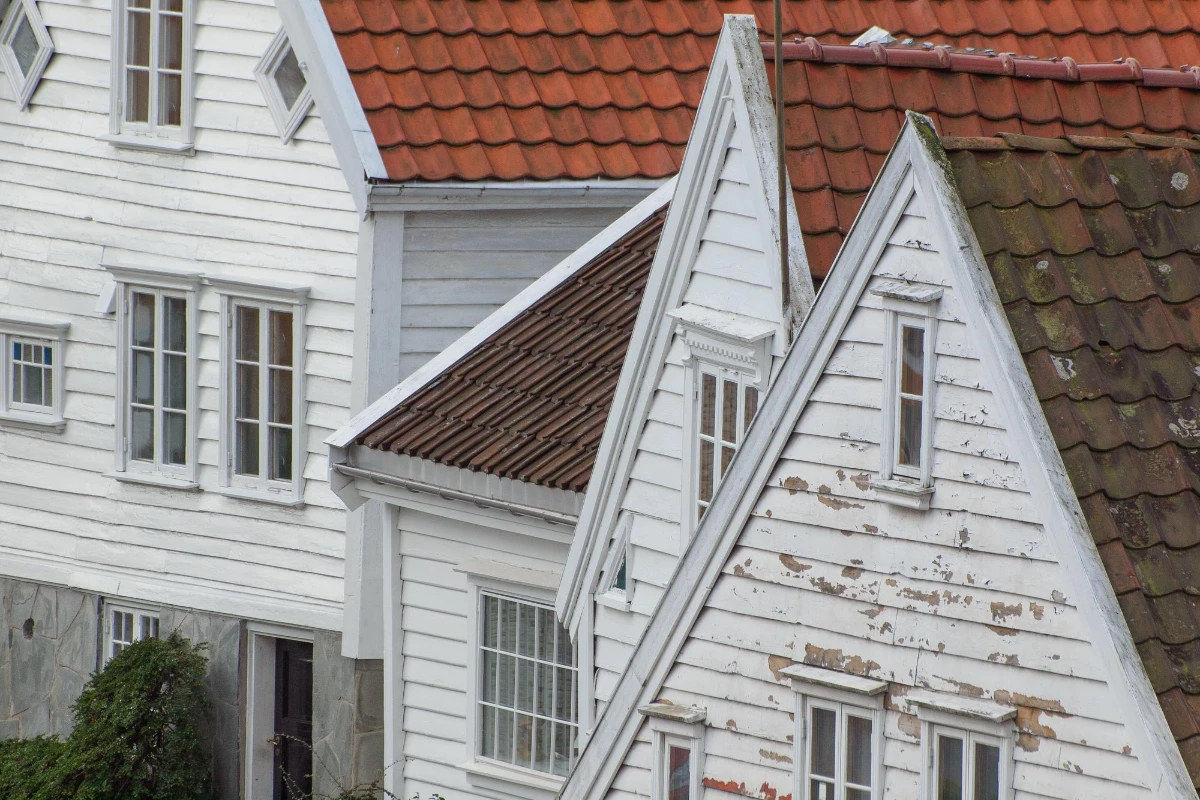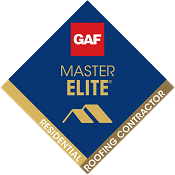Residential property roofs come in a variety of architectural styles. Two of the most popular choices are hip roofs and gable roofs. Both have their own unique features, advantages, and disadvantages.
What Is a Hip Roof?

A hip roof, also known as a hipped roof or hipped-gable roof, is a type of roof that has four sloping sides with a gentle slope. It is characterized by its triangular sides and a hipped or flat ridge line where all four sides meet. Hip roofs are commonly seen in traditional architectural styles, such as Colonial, Georgian, and Ranch homes.
Advantages of Hip Roofs
Hip roofs boast numerous advantages which contribute to their popularity in residential home designs.
- Excellent for high wind and snowy regions. With their sturdy design and low-pitched slopes, hip roofs are ideal for areas with strong winds and heavy snowfall. The sloping sides help to reduce the risk of wind damage by decreasing the amount of surface area that is exposed to strong winds.
- Provides extra living space. Hip roofs have a more compact design, which allows for additional attic or storage space. This makes them an excellent choice for homeowners who want maximum utilization of their property.
- Less prone to leaks. Since hip roofs have no flat sides, they are less likely to develop leaks compared to other roof designs. This makes them a better choice for areas with heavy rainfall.
Disadvantages of Hip Roofs
Despite its numerous advantages, there are also a few potential drawbacks to consider when choosing a hipped roof for your home.
- Construction costs. Building a hip roof requires more materials and labor, making them generally more expensive than gable roofs.
- Limited ventilation. Due to the sloping sides of a hip roof, it may be challenging to install proper ventilation systems. This can lead to poor air circulation in the attic, which can result in mold growth and other issues.
What Is a Gable Roof?

A gable roof, also known as a peaked or pitched roof, is a type of roof that has two sloping sides that meet at a ridge or peak. It is characterized by its triangular shape and can be seen in various architectural styles, including Colonial, Craftsman, and Victorian homes.
Advantages of Gable Roofs
Gabled roofs have some important advantages:
- Simple and cost-effective design. Gable roofs are easier to construct compared to other roof designs, making them a popular choice for homeowners on a budget. The simple design also makes them easier to maintain and repair.
- Improved ventilation. The sloping sides of gable roofs allow for better air circulation, keeping the interior of a home cooler during hot weather. This can help reduce energy costs by reducing the need for air conditioning.
- Versatile design options. Gable roofs can be customized in various ways, such as adding dormers or creating different roof pitches. This makes them a great choice for homeowners who want to add unique features to their home.
Disadvantages of Gable Roof
Like all roof types, there are some drawbacks to gable roofs:
- Not ideal for strong winds. Due to their design, gable roofs are more prone to wind damage in regions with high wind speeds. If not properly constructed or reinforced, they can be easily lifted or damaged by strong gusts.
- Limited attic space. Gable roof shape gives a limited amount of attic or storage space compared to hip roofs. This may not be an issue for smaller homes, but can be a consideration for larger properties.
- Potential for leaks. The peak of a gable roof can be susceptible to leaks if not properly maintained or during heavy rainfall. This can lead to water damage and the need for costly repairs.
Which Is Right for You?
Choosing between a hip roof and a gable roof ultimately depends on your personal preferences, budget, and the location of your home. Both have their own unique features and advantages, so it’s essential to carefully consider all aspects before making a decision. Consult with a professional roofer or architect to determine which type of roof best suits your needs and complements the overall design of your home.
Hip vs. Gable Roof Comparison

Here’s a quick checklist comparing hip roofs and gable roofs:
- Location and Climate – Hip roofs are ideal for high wind and snowy regions due to their sturdy design and sloping sides. Gable roofs, on the other hand, may be more prone to wind damage. However, they provide better air circulation, making them suitable for hot climates.
- Budget and Construction – Hip roofs generally require more materials and labor, making them more expensive to build compared to gable roofs. Gable roofs have a simpler design, making them easier and more cost-effective to construct and maintain.
- Space Utilization – Hip roofs offer more attic or storage space, making them a better choice for homeowners who want maximum utilization of their property. Conversely, gable roofs have limited attic space.
- Design Preferences – Gable roof design is more versatile and can be customized in various ways. Hip roof design, however, has a more traditional aesthetic appeal.
- Maintenance and Repairs – Both roof types require maintenance to prevent leaks and potential water damage. However, gable roofs are typically easier to maintain and repair due to their simpler design.
Other Roof Styles
While hip and gable roofs are the most common choices for residential properties, there are other roof styles that you may want to consider. These include:
Gambrel
This roof style features two sides with multiple sloping planes on each side, creating a barn-like appearance. It provides ample space for a loft or storage area.
Mansard
Similar to the gambrel roof, the mansard roof has four sides with multiple sloping planes. However, the lower portion of the roof has a steeper pitch than the upper portion, creating more interior space.
Flat
As its name suggests, this type of roof is completely flat and doesn’t have any slopes. It is a popular choice for modern and contemporary homes.
Butterfly
This roof style has two V-shaped roofs that angle down and meet in the middle, providing a unique and eye-catching design.
Choosing the Best Roof Style for Your Home
When deciding on a roof style for your home, it’s essential to consider not only the aesthetic appeal but also practicality and functionality. Factors such as climate, budget, and personal preferences should all be taken into account. Consult with a professional roofer or architect to determine which style best suits your needs and complements the overall design of your home. With the right roof style, you can enhance the curb appeal and functionality of your home for years to come. So, choose wisely!
Stronghold Roofing & Solar – Lakeland Roofers
When you need a roofing company in Lakeland, Sarasota, or southern Georgia, contact the professional team at Stronghold Roofing & Solar. We have experience working on roofs of all types, and would be delighted to assist you in deciding on which is right for your home.
Contact us today.
FAQ’s – Hip Versus Gable Roofs
The answer depends on various factors such as location, climate, budget, and personal preferences. Consult with a professional roofer to determine which type of roof best suits your needs.
In most cases, yes. Hip roofs require more materials and labor, making them more costly to construct compared to gable roofs.
Yes, gable roofs can be customized in various ways, such as adding dormers or creating different roof pitches. Consult with a professional roofer for design options that best suit your home.
It is recommended to have your roof inspected at least once a year, especially before and after severe weather conditions. Regular maintenance will help prevent potential issues and prolong the lifespan of your roof.










